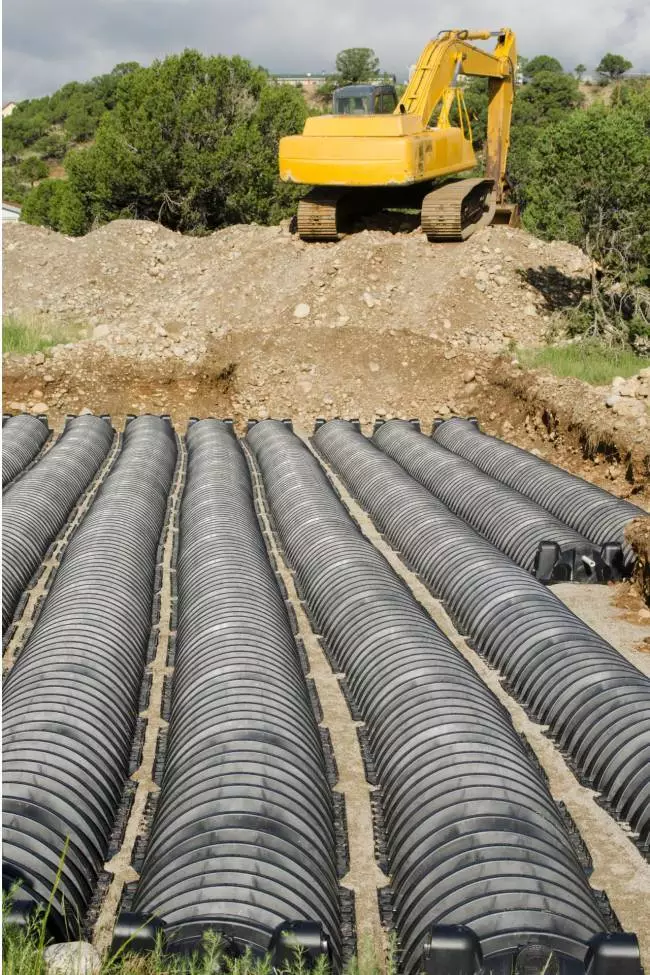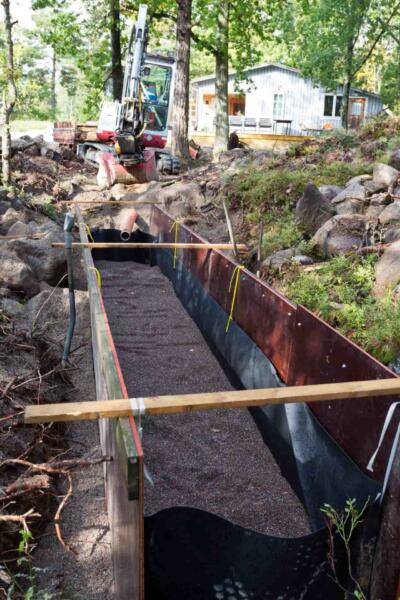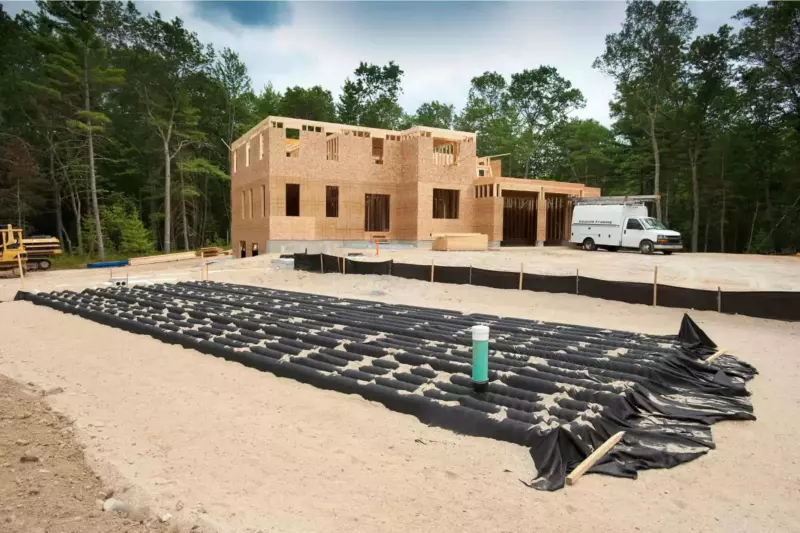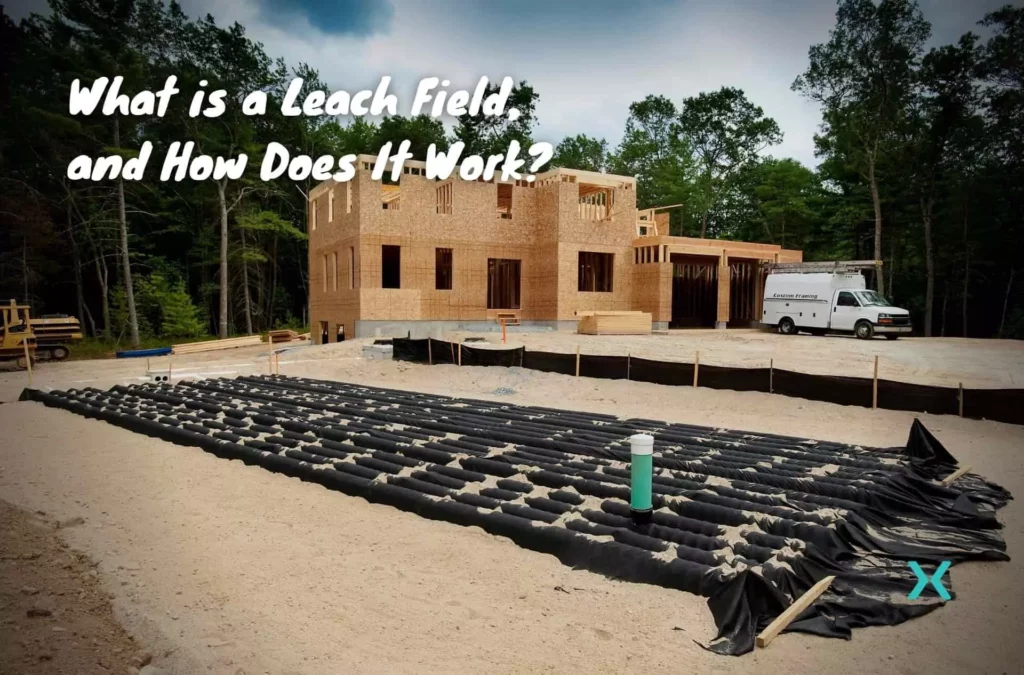Table of Contents
In the heart of every efficient septic system lies a component often overlooked yet vital for sustainable living – the leach field. As urban sprawl continues and more homes rely on septic systems, understanding the intricacies of a leach field has never been more crucial. This unsung hero of waste management not only protects your property but also safeguards our environment.
This article peels back the layers of complexity surrounding leach fields, offering clear, actionable insights into their function, maintenance, and importance. Whether you’re a homeowner, environmental enthusiast, or simply curious, you’ll discover why this topic demands attention now more than ever. Join us as we delve into leach fields, where modern sanitation meets environmental stewardship.
⭐ Key Takeaways
- A leach field is a crucial component of a septic system, filtering impurities from liquids exiting the septic tank and ensuring environmental safety.
- Regular maintenance, including avoiding harmful substances and heavy machinery on the leach field, is essential to prevent damage and costly repairs.
- Recognize signs of a failing leach field, such as slow drains, sewage odors, or wet areas over the field, to address issues promptly.
- Implement proper practices, like using septic-safe products and scheduling regular septic system inspections, to extend the lifespan of your leach field.
- Engage professionals for repairs and maintenance to ensure your leach field operates efficiently, protecting your property and the environment.
⭐ What Is a Leach Field?
A leach field is an underground cluster or array of perforated pipes set in gravel trenches connected to your septic system to help dispose of human waste. It removes impurities and contaminants from liquids leaving your septic tank. It acts as a disposal filter for the nasties on your septic tank after they have been anaerobically digested and passed through it.
You may hear other terms such as; septic tank field, septic drain field, septic leach field or percolation bed. They all mean the same thing – a leach field!
If you have a leach field, it’s important that you understand how it works and how to maintain it over time to ensure you and your family live comfortably in your home.

⭐ How Does A Leach Field Work?
If you are not connected to a municipal sewer system, you will likely have your own septic system. Your septic system comprises a septic tank, various pipes, and a drain field. To understand how a leach field works, we must explain how an offsite septic system works.
Here is how the entire system works:
- All your home waste and wastewater are piped into your septic tank.
- That waste then breaks down due to the number of bacteria in your septic tank.
- The solid waste sinks to the bottom of the tank and becomes sludge.
- The liquid waste floats to the top of the tank and is broken down by bacteria.
- The liquid waste is then piped into the leach field through underground pipes, while the solid waste stays in the septic tank to be further broken down over time by the bacteria.
- As the liquid passes through the leach field, it seeps into other ground underneath, where the native soil naturally filters it.
🚽 The Septic Tank
You need to be aware of three distinct layers within your septic tank. They are:
- Scum Layer: This top layer consists of stuff lighter than water, such as grease, oil, and cooking fats.
- Effluent Layer: This is the layer of wastewater.
- Sludge Layer: This is at the bottom of the tank. This layer consists of all the solid waste that goes into the tank.
🚽 Leach Lines
Leach lines are normally perforated PVC pipes that disperse the wastewater bled off from the septic system into the ground. To disperse this wastewater throughout the leach bed, the lines are spaced out over a large drainage area so the water can trickle out through the holes in the PVC pipe and allow for the water to be taken up by the native soil.
🚽 Septic Leach Field
This is the field itself. If properly designed, the field will be adequate for your needs. It is normally built with a layer of gravel and soil where the system of perforated pipes is laid out to help drainage. The best place for a drain field is a flat and open area on your property. They should not be built near bodies of water, wells or large trees.
⭐ Where is a Leach Field Normally Located?

By definition, a leach field is quite large and is typically located on a large and flat area of your property where the soil type allows for drainage. A septic tank drain field can have multiple trenches between 18 to 36 inches (0.45 meters to 0.91 meters) deep, are 1 to 3 feet (0.3 to 0.91 m) wide and can be put up to 100 feet (30.5 m) long.
There are normally 6 feet (1.8 m) between each trench. If properly maintained, leach fields last approx 20 – 25 years.
Want to Watch a Video Instead?
⭐ What Are The Signs of a Failing Leach Field?
A well-built and properly maintained drain field is out of sight, out of mind. Since your field is hidden away beneath the ground, it can be hard to identify issues. However, here are a few signs that give away problems you might have with your leach field:
- A toilet or pipes that gurgle when switched on or used.
- Slow-running drains
- Sink and toilet backups
- Slow or sluggish flushing toilets
- Sewage odors emanating from drains, toilets, septic tanks or the field.
- Wet grass or standing water over the drain field.
- If it’s a smaller leak, greener grass may give away its location.
Related Reading: Does Every House Have a Septic Tank?

⭐ How To Properly Maintain a Leach Field.
As your leach field is busy working 24/7 silently and invisibly under the ground, it’s easy to forget. It’s also easy to damage and very expensive to fix. So you should know the do’s and don’ts of maintaining a leach field.
Let’s start with the don’ts.
- Don’t put anything in your septic system besides human waste, water and toilet paper. No chemicals, paints, greases or flushable wipes ever!
- Don’t put anything other than biodegradable food waste in your kitchen’s garbage disposal.
- Don’t park vehicles on the field, especially heavy machinery of any type. This can cause soil compaction and may squash your percolation lines.
- Don’t let large animals graze or ride horses on your leach field.
- Don’t build over your field. Any heavy objects of anything with a large footprint, like a barn, will inhibit your soil’s ability to uptake oxygen, affecting its ability to break down bacteria.
- Don’t build a garden over your field. Fertilizers, tilling, irrigation and plants with deep roots will damage your leach field and its components. Plus, any edible plants grown over a leach field may be contaminated with microorganisms.
- No major landscaping near or on a field. Any changes to water flow from retaining walls or changes to slopes will affect the proper functioning of your septic leach field.
Not managing your leach field properly can give way to many problems.
Poor landscaping can overload your drain field during heavy rain, causing it to flood. Or, even worse, allow bacteria to leach quickly into the groundwater as it hasn’t had time to filter correctly.
Now for the Do’s
- Kids and pets can play on a leach field that’s properly maintained. As long as your leach field is not showing signs of failing, you don’t have to worry about exposure to bacteria or effluent.
- Use smaller vehicles on the leach field. Bicycles and lighter motorized vehicles are acceptable as they are not heavy enough to cause damage to leach lines and compact the soil.
- Minor landscaping is allowed. Grass and other small native plants are fine to plant over a leach field. Plant low-growing plants with noninvasive roots instead of grass. These should be plants or grasses that don’t require any maintenance, fertilizer or irrigation.

⭐ Can You Repair A Leach Field?
Repairing simple problems like clogs can be fairly inexpensive. Any catastrophic failures from the abovementioned problems can leave you with a stinky mess and a large bill. Properly maintaining your leach field by following the points in this article can prevent costly repairs.
Here are some plumbing system tips to avoid damaging your septic systems.
- Don’t put anything in your septic system besides human waste, water and toilet paper. No chemicals, paints, greases or flushable wipes ever!
- Use septic-safe products for cleaning drains and toilets
- Don’t use anti-bacterial products for washing or cleaning.
- Limit the use of garbage disposals. Throw waste in the actual garbage or compost it.
- Limit laundry usage and spread out your washing schedule.
- Schedule regular septic tank clean out every three to five years, depending on usage.
- Schedule yearly septic system inspections.

⭐ Managing Your Leach Field the Right Way
Efficiently managing your leach field is essential for a hassle-free homeownership experience. By adhering to the guidelines and avoiding the pitfalls outlined in our article, you can ensure your property remains a joyful space for your family, free from the troubles and expenses associated with drain field failures. However, professional assistance is just a call away if you encounter uncertainties or signs of malfunction in your leach field.
Phyxter Home Services is a beacon of expertise in the Okanagan region, offering unparalleled knowledge and quality in plumbing solutions. Our connection with a vast network of skilled, independent plumbers ensures your plumbing needs are promptly and effectively addressed.
For those eager to deepen their understanding of household maintenance, our blog is a treasure trove of insightful articles on plumbing and beyond. We invite you to explore further and consider Phyxter Plumbing Services for reliable, expert care for your home.
📗 Related Reading: DIY Guide to 15 Common Plumbing Problems & Solutions

